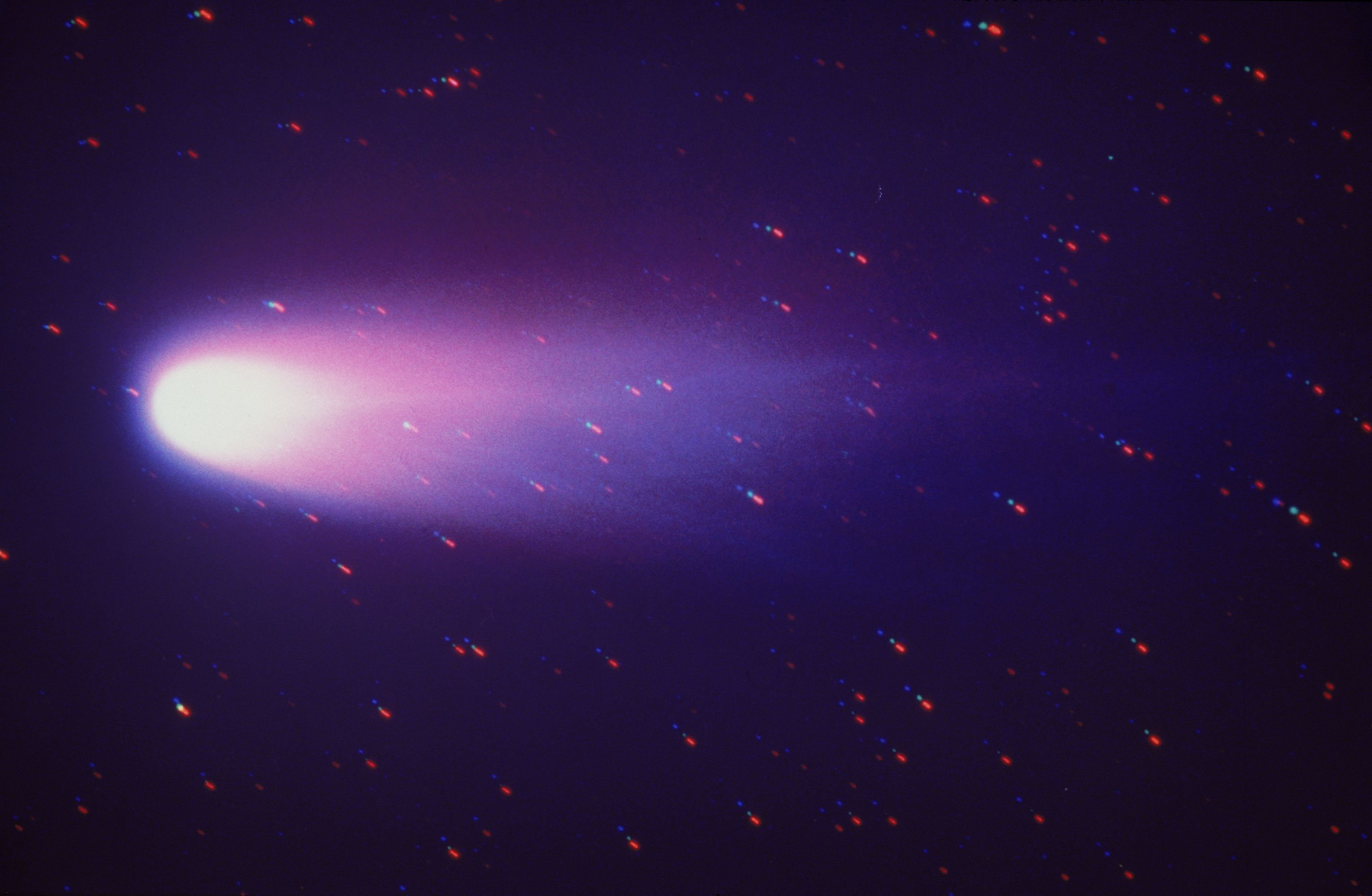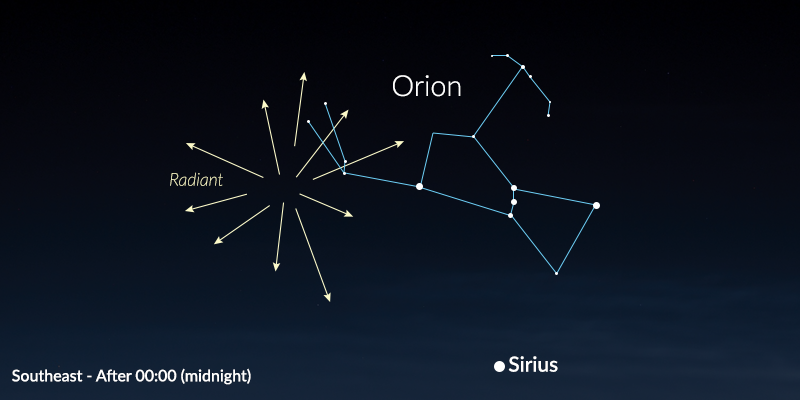The Orionids
The Orionids, like all meteor showers, are named after the constellation in which they appear to come from, which in this case is Orion. Remnants from this shower come from Halley’s Comet, officially designated 1P/Halley. Halley’s Comet is the only known short-period comet that is clearly visible to the naked eye from Earth. This comet swings by the sun every 76 years. Halley last appeared in the inner parts of the Solar System in 1986 and will next appear in mid-2061. The current orbit of Halley’s Comet does not intersect the Earth so the Orionid meteors we see today were left behind by the comet many years ago. Meteoroids (meteors orbiting in space) are subject to perturbations when they pass close to the planets. This makes it difficult to predict just how densely populated the meteoroids are when then intersect the Earth. Therefore it is also difficult to predict just how active the Orionids will be year to year. The latest research believes that the Orionids are in a 12 year cycle with a particle resonance with Jupiter, independent of the much longer orbit of Halley’s Comet. The last cycle peaked in 2006, when Orionid activity match the normally stronger Perseids. Rates have been low during the first half of the 2010’s so the hope is that activity will be on the increase the next few years.

Halley’s Comet © ESA
Where? When? How many?
Current Orionid rates should be currently near 10 per hour during the last few hours before dawn. This should increase to 20-25 meteors per hours near maximum activity, which occurs on October 22. Unlike most major annual showers, the Orionids have a flat maximum where strong rates occur over several nights centered on October 22. Therefore, if you are clouded out on the morning of October 22, don’t despair as good rates will continue for a few more nights. Good rates can be see equally well before the maximum too!
If you watch the same place in the sky all Orionid meteors will have the same characteristics. They will move in parallel paths and will posses the same velocity. These paths will lead back to the radiant in Orion. These characteristics change if you look somewhere else. In general, Orionid meteors will appear to be swift unless you see them near the radiant or near the horizon. Also the paths will appear shorter near the radiant and near the horizon. Therefore it is advisable to have the Orionid radiant near the edge of your field of view so that you will see longer meteors. There are also minor radiants active in Gemini, Leo Minor, and Aries this time of year.
The radiant, located on the Orion-Gemini border, rises near 2200 (10pm) local daylight saving time. This is not the best time to see them though as some of the activity will occur beyond your line of sight. I would be better to wait until after midnight when this area of the sky has risen higher into the sky. At that time Orionid meteors can be seen shooting in all directions. As is standard for most meteor showers, the best time to watch this shower will be between the hours of midnight and dawn – regardless of your time zone. With the radiant lying just north of the celestial equator, this allows the Orionids to be seen all over the Earth except from Antarctica, where daylight/twilight persists for 24 hours.
This year, the waxing crescent moon sets well before midnight on October 21, leaving the morning hours dark for meteor watching! In the predawn and dawn sky, look for Sirius, the sky’s brightest star as a guide. The bright constellation of Orion lies above Sirius and the Orionid radiant lies just to the upper left of the main part of Orion.

Orionids’ radiant – SouthEast after Midnight
Meteor Shower?
Most meteor showers have their origins with comets. Each time a comet swings by the sun, it produces copious amounts of meteoroid sized particles which will eventually spread out along the entire orbit of the comet to form a meteoroid “stream”. If the Earth’s orbit and the comet’s orbit intersect at some point, then the Earth will pass through this stream for a few days at roughly the same time each year, encountering a meteor shower.
Because meteor shower particles are all traveling in parallel paths, at the same velocity, they will all appear to radiate from a single point in the sky to an observer below. This radiant point is caused by the effect of perspective, similar to railroad tracks converging at a single vanishing point on the horizon when viewed from the middle of the tracks.



